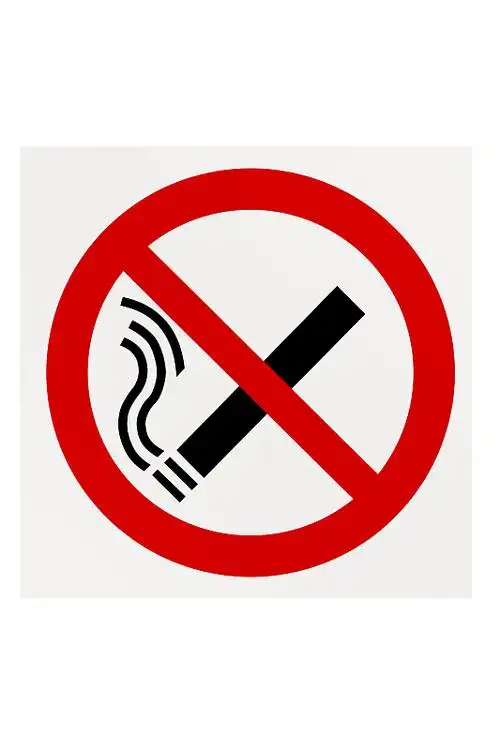Title: Smoking Exacerbates Prognosis in Arrhythmogenic Cardiomyopathy: A Multifaceted Threat
Arrhythmogenic Cardiomyopathy (ACM) is a complex and often insidious genetic heart muscle disorder characterized by the progressive replacement of ventricular myocardium with fibrofatty tissue. This pathological remodeling disrupts the heart's electrical conduction system, leading to a heightened propensity for life-threatening ventricular arrhythmias, heart failure, and sudden cardiac death, particularly in young athletes. While genetic mutations, primarily in desmosomal proteins, form the cornerstone of its pathogenesis, the clinical expression and progression of the disease are profoundly influenced by external factors. Among these modifiable risk factors, cigarette smoking emerges as a critically detrimental agent that significantly worsens the prognosis of ACM through a confluence of hemodynamic, inflammatory, pro-arrhythmic, and direct cytotoxic mechanisms.
The Pathophysiological Intersection of Smoking and ACM
To comprehend the adverse relationship between smoking and ACM, one must first understand the primary drivers of the disease. ACM is fundamentally a disease of the cardiac desmosome, the structure responsible for cell-to-cell adhesion. Mutations in genes like PKP2, DSP, and DSG2 impair this adhesion, leading to myocyte detachment and death under conditions of mechanical stress. The ensuing inflammatory response and faulty repair mechanisms result in the hallmark fibrofatty infiltration.
Cigarette smoke, a toxic cocktail of over 7,000 chemicals, including nicotine, carbon monoxide, and oxidative stressors, directly exacerbates every stage of this pathological cascade:
-
Hemodynamic Stress: Nicotine is a potent sympathomimetic agent. It stimulates the release of catecholamines, leading to increased heart rate, elevated blood pressure, and enhanced myocardial contractility. This creates a state of chronic mechanical stress on the heart wall, precisely the kind of stimulus that accelerates the detachment of already vulnerable cardiac myocytes in ACM patients. This increased wall stress promotes further cell death, activating the cycle of repair, fibrosis, and fatty replacement.

-
Oxidative Stress and Inflammation: Cigarette smoke is a major source of reactive oxygen species (ROS), causing significant oxidative damage. This oxidative environment promotes inflammation by activating key signaling pathways like NF-κB, leading to the recruitment of inflammatory cells into the myocardium. In ACM, where inflammation is a key player in disease progression, smoking acts as a constant accelerant, fueling the fire that drives myocyte loss and fibrotic scarring. The resulting scar tissue forms the substrate for re-entrant ventricular arrhythmias.
-
Direct Electrical Instability (Pro-arrhythmic Effects): Nicotine lowers the threshold for ventricular fibrillation. It can cause electrophysiological changes, including altered action potential duration and enhanced automaticity, making the heart more susceptible to erratic electrical impulses. For an ACM patient whose heart is already a pro-arrhythmic environment due to disrupted conduction pathways and scar tissue, smoking provides the final "spark" that can trigger a sustained ventricular tachycardia or fibrillation.
-
Hypoxia and Endothelial Dysfunction: Carbon monoxide in smoke binds to hemoglobin with an affinity over 200 times greater than oxygen, forming carboxyhemoglobin. This drastically reduces the oxygen-carrying capacity of blood, leading to myocardial hypoxia. Chronic hypoxia is a known stimulus for fibrosis and apoptosis. Furthermore, smoking causes systemic endothelial dysfunction, impairing coronary vasodilation and further compromising blood flow and oxygen delivery to the energy-starved cardiac tissue.
Clinical Evidence and Prognostic Implications
The theoretical pathophysiological links are strongly supported by clinical observations. Studies have consistently shown that ACM patients who smoke present with a more aggressive disease phenotype. They experience a higher burden of ventricular arrhythmias, require more frequent interventions such as implantable cardioverter-defibrillator (ICD) shocks or catheter ablations, and have an earlier onset of symptomatic heart failure.
The progression from the concealed phase of the disease (asymptomatic with electrical abnormalities) to the overt phase (right ventricular or biventricular failure) is markedly accelerated in smokers. The cumulative burden of fibrosis not only promotes arrhythmias but also progressively impairs the heart's pumping function. Consequently, smokers with ACM are more likely to reach end-stage heart failure sooner, necessitating advanced therapies like heart transplantation at a younger age.
Most critically, the risk of sudden cardiac death (SCD), the most feared complication of ACM, is substantially elevated. The combination of a pro-fibrotic substrate, enhanced sympathetic drive, direct pro-arrhythmic effects, and hypoxia creates a perfect storm for a fatal arrhythmic event.
Beyond Active Smoking: The Role of Secondhand Exposure
The threat extends beyond the active smoker. Secondhand smoke exposure, particularly for children and young adults who may be genetically predisposed to ACM but are yet undiagnosed, poses a significant risk. Chronic inhalation of environmental tobacco smoke can initiate similar pathways of inflammation and oxidative stress, potentially influencing the initial expression and early progression of the disease before it is even detected.
A Call for Action: Smoking Cessation as Paramount Therapy
In the management of ACM, where the genetic defect itself is currently incurable, targeting modifiable risk factors becomes the most impactful therapeutic strategy. Smoking cessation is not merely a lifestyle recommendation; it must be framed as a non-negotiable, integral component of disease management.
Cardiologists and healthcare providers must aggressively counsel ACM patients and their families on the absolute necessity of avoiding tobacco in all forms. The prognosis of ACM is heterogeneous, and smoking is a powerful determinant of which end of the spectrum a patient will experience. Quitting smoking can markedly slow the progression of fibrofatty replacement, reduce the frequency of arrhythmic events, improve overall cardiac function, and ultimately prolong survival. It is one of the most effective interventions available to change the natural history of this challenging disease.
In conclusion, cigarette smoking and arrhythmogenic cardiomyopathy represent a dangerous synergy. Smoking systematically exacerbates the core mechanisms of ACM—mechanical stress, inflammation, fibrosis, and electrical instability—propelling patients toward a worse clinical outcome characterized by debilitating arrhythmias, advanced heart failure, and premature death. Emphasizing and achieving complete tobacco abstinence is therefore a critical, life-saving pillar in the comprehensive care of every individual living with this condition.












